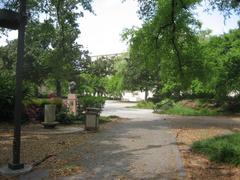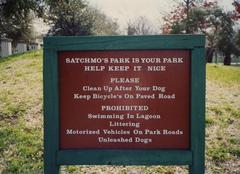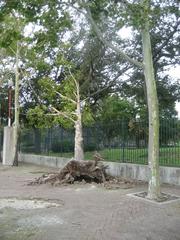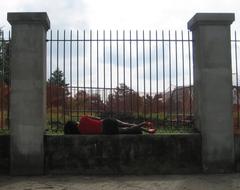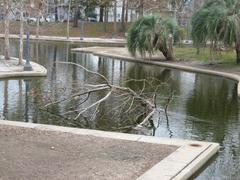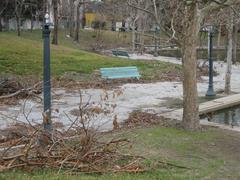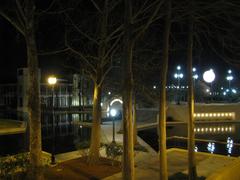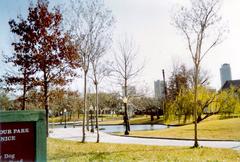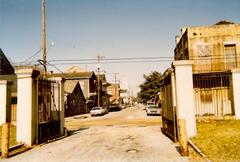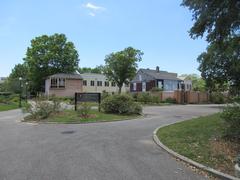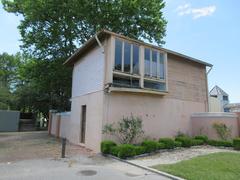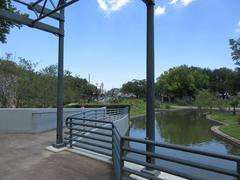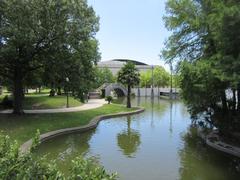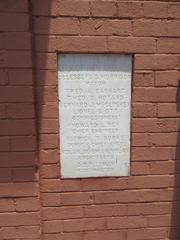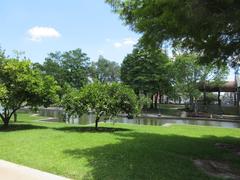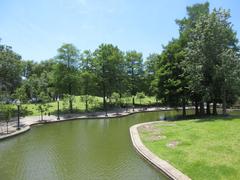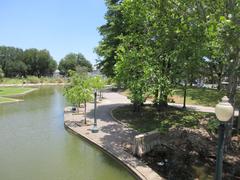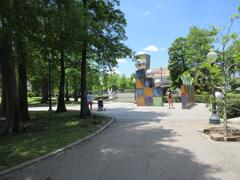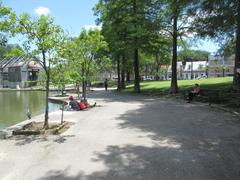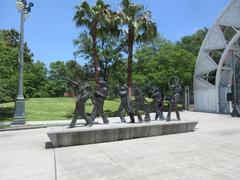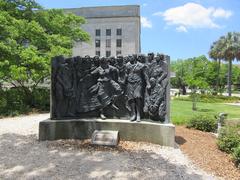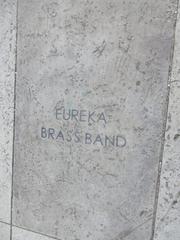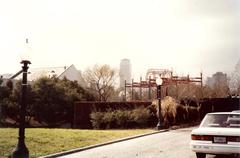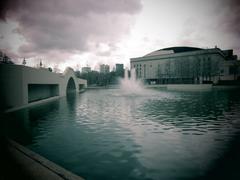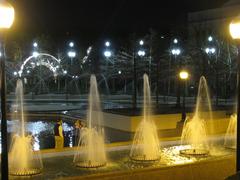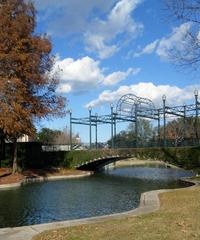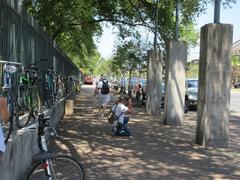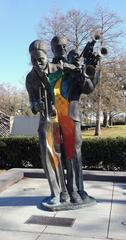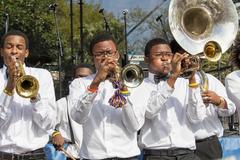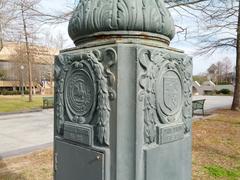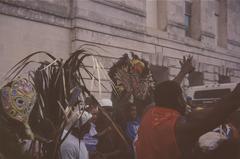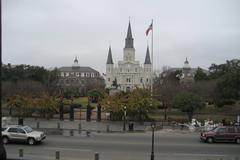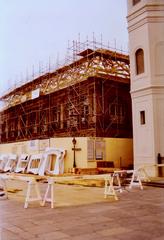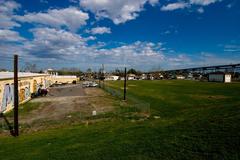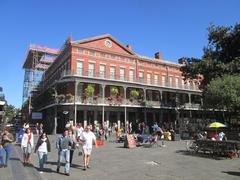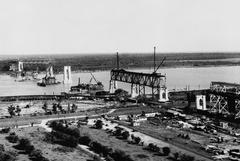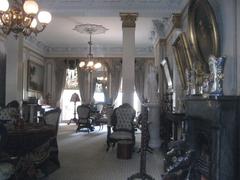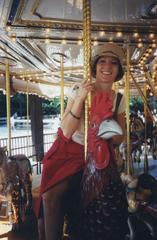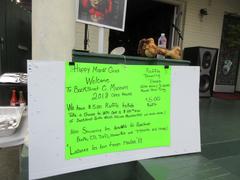
Auto Bridge in New Orleans: Visiting Hours, Tickets, and Historical Sites
Date: 18/07/2024
Introduction
The Huey P. Long Bridge, affectionately known as the “Auto Bridge” by locals, represents a significant chapter in New Orleans’ infrastructure history. This iconic structure, named after Louisiana’s controversial yet influential governor Huey P. Long, has been a vital artery in the city’s transportation network since its completion in 1935. Spanning the mighty Mississippi River, the bridge was a monumental engineering feat of its time, constructed during the Great Depression, providing much-needed jobs and symbolizing progress (New Orleans Historical). The cantilever truss design, chosen for its strength and ability to span the river without obstructing shipping traffic, reflects the innovative spirit that drove its creation. As we delve into the history, significance, and visitor information of the Huey P. Long Bridge, we uncover a story of ambition, resilience, and the transformative power of infrastructure.
Table of Contents
- [The History and Significance of the Huey P. Long Bridge](#the-history-and-significance-of-the-huey-p-long-bridgethe-history-and-significance-of-the-huey-p-long-bridge)
- [Early 20th Century - A City Divided](#early-20th-century---a-city-dividedearly-20th-century---a-city-divided)
- [The Vision of Huey P. Long](#the-vision-of-huey-p-longthe-vision-of-huey-p-long)
- [Construction - A Marvel of Engineering](#construction---a-marvel-of-engineeringconstruction---a-marvel-of-engineering)
- [Opening and Early Impact](#opening-and-early-impactopening-and-early-impact)
- [The Bridge’s Evolution - Expansion and Modernization](#the-bridges-evolution---expansion-and-modernizationthe-bridges-evolution---expansion-and-modernization)
- [Visitor Information - Tickets, Visiting Hours, and Travel Tips](#visitor-information---tickets-visiting-hours-and-travel-tipsvisitor-information---tickets-visiting-hours-and-travel-tips)
- [Nearby Attractions](#nearby-attractionsnearby-attractions)
- [Special Events and Guided Tours](#special-events-and-guided-toursspecial-events-and-guided-tours)
- [Photographic Spots](#photographic-spotsphotographic-spots)
- [The Huey P. Long Bridge Today - A Vital Link and Enduring Symbol](#the-huey-p-long-bridge-today---a-vital-link-and-enduring-symbolthe-huey-p-long-bridge-today---a-vital-link-and-enduring-symbol)
- [FAQs](#faqsfaqs)
- [References](#referencesreferences)
The History and Significance of the Huey P. Long Bridge
Early 20th Century - A City Divided
In the early 1900s, the mighty Mississippi River, while a lifeline for commerce, presented a significant obstacle for New Orleans. The city’s west bank remained largely undeveloped, separated from the economic and cultural heart of New Orleans on the east bank. The only means of crossing were ferries, which were slow, unreliable, and often overwhelmed by demand. The lack of a reliable crossing hindered trade and expansion, holding back the city’s potential.
The Vision of Huey P. Long
Enter Huey P. Long, the charismatic and controversial governor of Louisiana. Long, known for his populist policies and ambitious infrastructure projects, recognized the urgent need for a bridge. He envisioned a structure that would not only connect the divided city but also serve as a symbol of progress and modernity. In 1929, Long, despite facing opposition from political rivals and ferry companies, successfully campaigned for the bridge’s construction.
Construction - A Marvel of Engineering
The Huey P. Long Bridge was a daring engineering feat for its time. Built between 1933 and 1935, the bridge was a cantilever truss design, chosen for its ability to span the river’s wide expanse without obstructing shipping traffic. The bridge’s construction was a massive undertaking, requiring over 33,000 tons of steel and employing thousands of workers during the depths of the Great Depression. The project was a source of much-needed jobs and a symbol of hope during a time of economic hardship.
Opening and Early Impact
The Huey P. Long Bridge opened to traffic on April 16, 1935, forever changing the landscape of New Orleans. The bridge’s impact was immediate and profound. It spurred rapid development on the west bank, transforming it from a rural outpost into a thriving hub for industry and residential areas. The bridge also eased traffic congestion in the city, facilitating the movement of goods and people. It became a vital artery for commerce, connecting New Orleans to points west and solidifying its position as a major transportation hub.
The Bridge’s Evolution - Expansion and Modernization
As New Orleans grew, so too did the traffic on the Huey P. Long Bridge. By the 1980s, the bridge was facing increasing congestion, and its original two lanes were no longer sufficient to handle the volume of vehicles. To address this, a major expansion project was undertaken in the late 1980s and early 1990s. This project saw the addition of a second deck to the bridge, doubling its capacity and ensuring its continued viability for decades to come.
Visitor Information - Tickets, Visiting Hours, and Travel Tips
If you’re planning a visit to the Huey P. Long Bridge, here are some useful tips:
- Visiting Hours: The bridge is accessible 24/7, but the best times to visit for scenic views are early morning and late afternoon.
- Tickets: There is no fee to cross the bridge, but guided tours might be available for a fee through local tour operators.
- Travel Tips: Be mindful of traffic during peak hours. The bridge offers stunning views of the Mississippi River, so plan to take some photos.
Nearby Attractions
The vicinity of the Huey P. Long Bridge offers several attractions worth exploring:
- Audubon Zoo: Located near the west bank, this zoo is perfect for a family day out.
- Historic New Orleans Collection: Dive into the rich history of New Orleans with a visit to this nearby museum.
- Mississippi Riverfront: Enjoy a leisurely stroll along the riverfront and take in the scenic views.
Special Events and Guided Tours
Throughout the year, there are special events and guided tours that focus on the history and significance of the Huey P. Long Bridge. Check with local tour operators or the city’s tourism website for the latest information.
Photographic Spots
The Huey P. Long Bridge provides excellent photographic opportunities. The best spots for capturing the bridge include the riverfront parks on both the east and west banks.
The Huey P. Long Bridge Today - A Vital Link and Enduring Symbol
Today, the Huey P. Long Bridge stands as a testament to New Orleans’s resilience and its ability to adapt to changing times. The bridge remains a vital transportation artery, carrying millions of vehicles annually and connecting the city’s vibrant neighborhoods. It has also become a beloved landmark, its distinctive silhouette a familiar sight on the New Orleans skyline. The bridge’s enduring legacy is a testament to the vision of its namesake and the skill of the engineers who made it a reality.
FAQs
Q: What are the visiting hours for the Huey P. Long Bridge? A: The bridge is accessible 24/7, but the best times to visit for scenic views are early morning and late afternoon.
Q: Is there a fee to cross the bridge? A: There is no fee to cross the bridge, but guided tours might be available for a fee through local tour operators.
Q: Are there any nearby attractions? A: Yes, nearby attractions include the Audubon Zoo, the Historic New Orleans Collection, and the Mississippi Riverfront.
Conclusion
The Huey P. Long Bridge stands as more than just a physical structure; it is a symbol of New Orleans’ spirit and resilience. From its inception as a solution to the city’s geographical and economic challenges to its current role as a crucial transportation link, the bridge encapsulates the vision and determination of its namesake and the countless engineers and workers who brought it to life. Its enduring presence, even after nearly a century, underscores its importance to the city’s infrastructure and its role in connecting communities. As visitors and locals alike traverse this iconic landmark, they are reminded of the bridge’s historical significance and its ongoing impact on the vibrant city of New Orleans. For those looking to explore further, the bridge’s story is a testament to the power of bold vision and the enduring legacy of innovative engineering (National Park Service).
